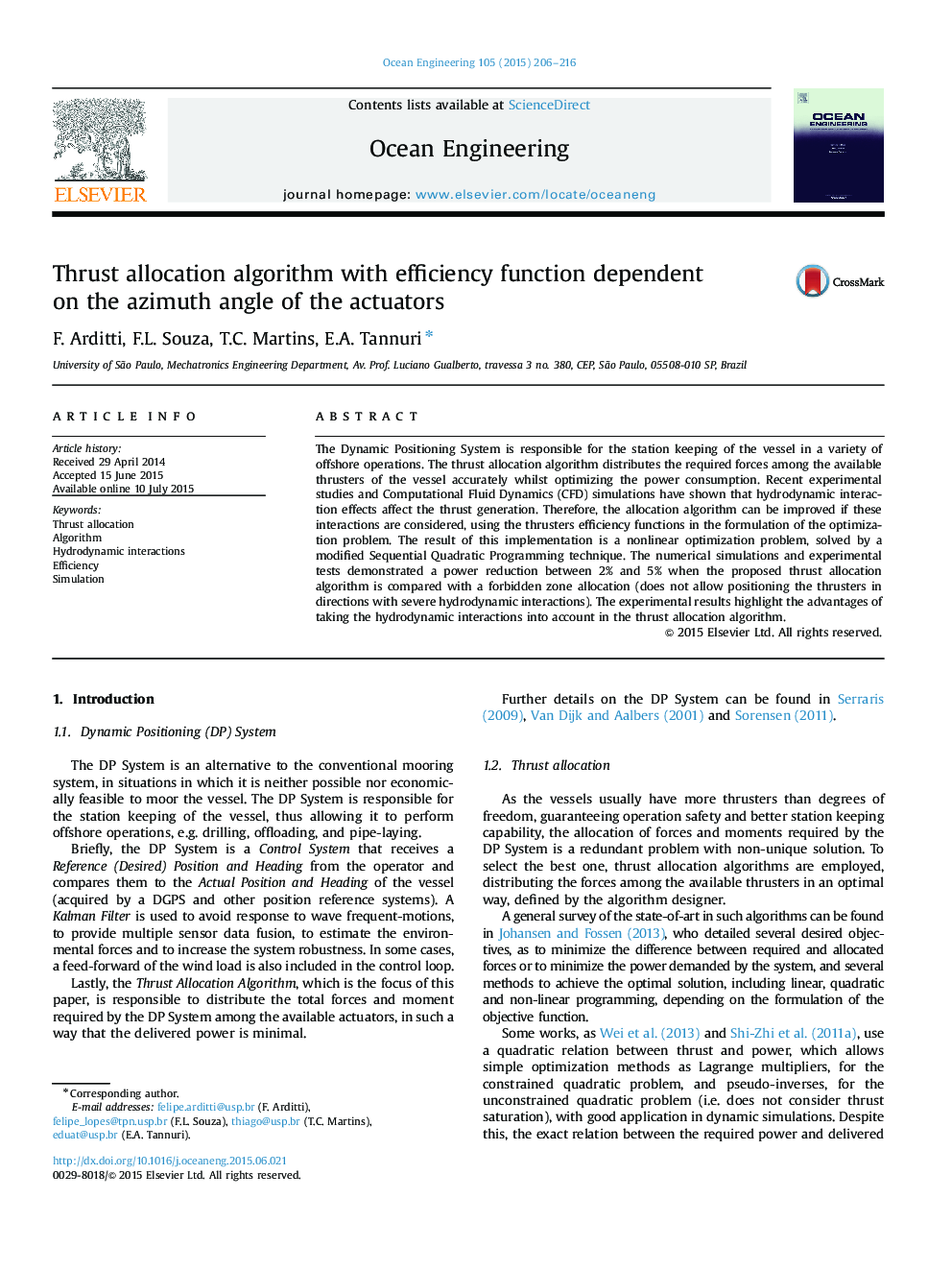| Article ID | Journal | Published Year | Pages | File Type |
|---|---|---|---|---|
| 1725302 | Ocean Engineering | 2015 | 11 Pages |
•The introduction was reorganized and recent works on this topic were included and discussed.•More details about the experimental set-up were included in the new version of the paper.•More details about the optimization technique up were included in the new version of the paper.
The Dynamic Positioning System is responsible for the station keeping of the vessel in a variety of offshore operations. The thrust allocation algorithm distributes the required forces among the available thrusters of the vessel accurately whilst optimizing the power consumption. Recent experimental studies and Computational Fluid Dynamics (CFD) simulations have shown that hydrodynamic interaction effects affect the thrust generation. Therefore, the allocation algorithm can be improved if these interactions are considered, using the thrusters efficiency functions in the formulation of the optimization problem. The result of this implementation is a nonlinear optimization problem, solved by a modified Sequential Quadratic Programming technique. The numerical simulations and experimental tests demonstrated a power reduction between 2% and 5% when the proposed thrust allocation algorithm is compared with a forbidden zone allocation (does not allow positioning the thrusters in directions with severe hydrodynamic interactions). The experimental results highlight the advantages of taking the hydrodynamic interactions into account in the thrust allocation algorithm.
